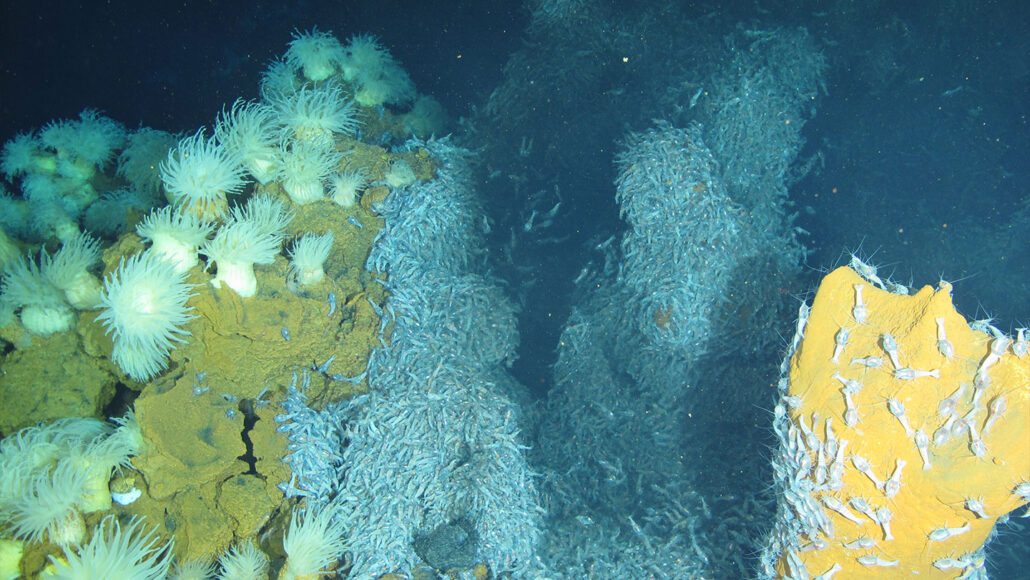Avoiding Metal Poisoning: Survival Strategies of Deep-Sea Hydrothermal Vent Sea Anemones

The presence of life in proximity to deep-sea hydrothermal vents can be linked to metal - quite literally.
Aside from the harsh conditions caused by pressures, total darkness, extreme temperatures, and dangerous plumes spewing poisonous substances from the depths of the Earth, there is also a threat arising from the underground chimneys' exhaust. It contains particles of heavy metals such as iron and manganese which, when present in large amounts, become toxic. Yet, it is surprising to see a wide range of animals forming thriving communities near these vents, seemingly unaffected by the harmful metals around them.
Recent research has shed light on how one particular organism thrives under such extreme conditions. Scientists discovered that the sea anemone Alvinactis idsseensis has an unexpected collection of genes that are designed to produce proteins capable of transporting metals to a part of the cell where they cannot cause damage. This finding appeared in a report in Science Advances on October 20.
Several organisms possess a few MTP genes necessary for normal metal metabolism. For example, a species of sea anemone living in shallow waters has a single MTP gene. But in contrast, the marine organism A. idsseensis possesses as many as 13 MTP genes, as discovered by marine biologist Haibin Zhang and his colleagues.
The sea anemone A. idsseensis, which dominates the Edmond and Kairei vent fields in the southwest Indian Ocean, feeds on blind shrimps. Not much is known about how these anemones adapt to survive under such extreme conditions, explains Zhang, who is affiliated with the Chinese Academy of Sciences’ Institute of Deep-Sea Science and Engineering in Sanya.
When the team studied the genome of one of these sea anemones, which they collected from the Edmond vent field with the help of the human-occupied vehicle Shenhaiyongshi in 2019, they stumbled upon the creature's survival secret. When they genetically engineered two of the most active MTP genes of the sea anemone into yeast, it fortified the yeast against lethal levels of iron and manganese, the most commonly found metals in the vent environment.
This specific approach of increasing the MTP genes as a strategy to detoxify metals has also been observed in plants. An example would be the mustard plant Arabidopsis halleri which grows well in zinc-rich soil, having more MTP genes than its counterparts that cannot tolerate excessive metal.
These findings could be indicative of "convergent evolution" between anemones and plants, where similar environmental pressures lead to the evolution of similar solutions within organisms that are not closely related, according to Zhang.
“They have likely identified a good example of convergent evolution, or at least a similar strategy to detoxify metals,” says Felipe Klein Ricachenevsky, a plant physiologist at the Federal University of Rio Grande do Sul in Porto Alegre, Brazil, who was not a part of the study.
The exact manner in which the anemone MTP genes help to ward off metal poisoning remains to be investigated. In plant cells, MTPs isolate metals into large cellular structures, or organelles, known as vacuoles (refer to SN: 6/4/19). However, such vacuoles are not found in animal cells, leading Ricachenevsky to ask about the equivalent organ in animals, a topic he thinks should be explored in the future.
Readers' contributions helped publish this article, which reflects an investment in quality science journalism.




